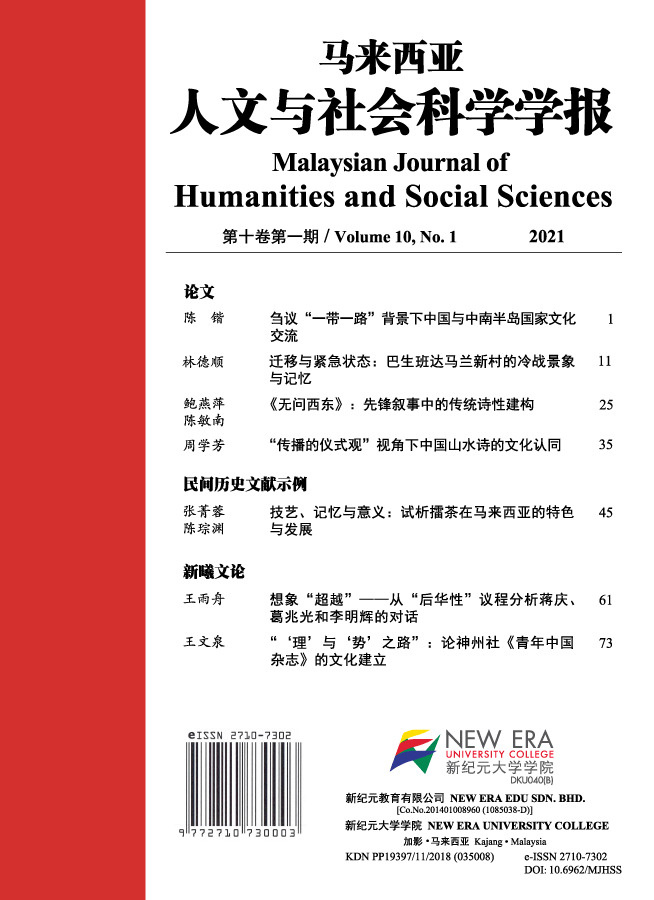迁移与紧急状态:巴生班达马兰新村的冷战景象与记忆 Migration and State of Emergency: Cold War Scenes and Memories in Pandamaran New Village, Klang
Keywords:
后尾芭、班达马兰新村、冷战、巴生港口, Bukit Kerayong, Pandamaran New Village, Cold War, Port SwettenhamAbstract
新村是冷战的产品。位千马来西亚雪兰我州巴生港口附近的班达马兰新村也不例外。它在1951 年设立后,英国殖民地政府从巴生周边强制迁移约两千户人家过来,最终约一千两百户住下,人口约八千人。新村成立前,相关地段本来有一个被称为“后尾芭”的自然聚落,人口大约八十人左右,多以务农为生,已设有神庙、学校。新村初期,政府以安全之名,严格管控居民活动与地方的发展,初到者通过马华公会与官方沟通协助,渐进形成一种独特的乡区聚落形式,更是型塑马来西亚多元民族却又分而治之的社会形态,影响至今。本文试图通过各方资料重构班达马兰新村在冷战大氛围下组建前后的景象。当中可以一窥早期“后尾芭“依附在巴生市与巴生港郊区的自然构成和后来新村的强制建成变化,加上当地居民早期戒严生活的记忆,借此组成马来西亚冷战图像的其中一片拼图。
New Villages or Kampung Baru (in Malay) are the product of the Cold War. Pandamaran New Village located near Port Klang in Selangor is no exception. After it was established in 1951, the British colonial government had forcibly relocated about 2,000 households from around Klang. In the end, about 1,200 households settled down and there were approximately 8,000 people. There was originally a natural settlement called Bukit Kerayong Road in the area before the establishment of the new village. There were around 80 people, who were mostly farmer, and temples and schools were also founded. In the early days of the new village, the government strictly controlled the residents' activities and local development in the name of security considerations. Through the MCA's official communication with and assistance of the government, the newcomers gradually formed a unique rural settlement. Such settlement has shaped Malaysia's multi-ethnic, yet divided and ruled the society, which has influence until today. With various
materials, this article attempts to reconstruct the situation before and after the formation of Pandamaran New Village during the Cold War. In so doing, one can have a glimpse of the early Bukit Kerayong Road, located next to the city of Klang and the upper reaches of Port Klang, of its later transformation into a new village and the local residents' memories of the early life under martial law. This story forms a part of Malaysian history in the Cold War era.




